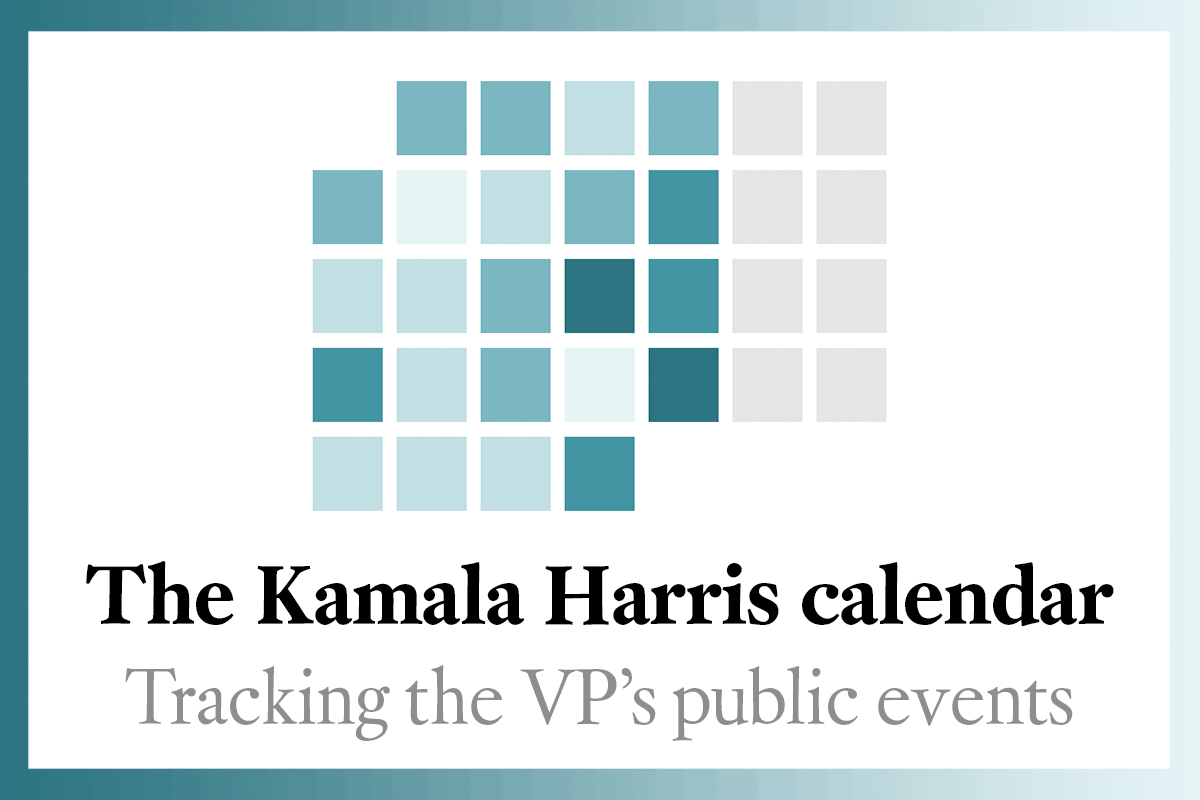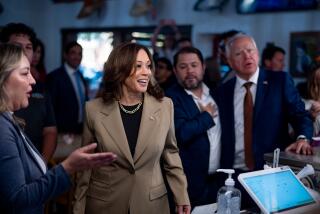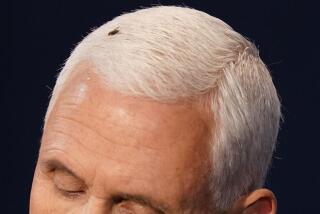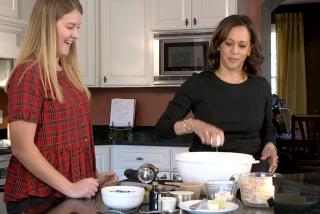It’s not just a meal: Inside the nation’s most secretive and exclusive power lunch
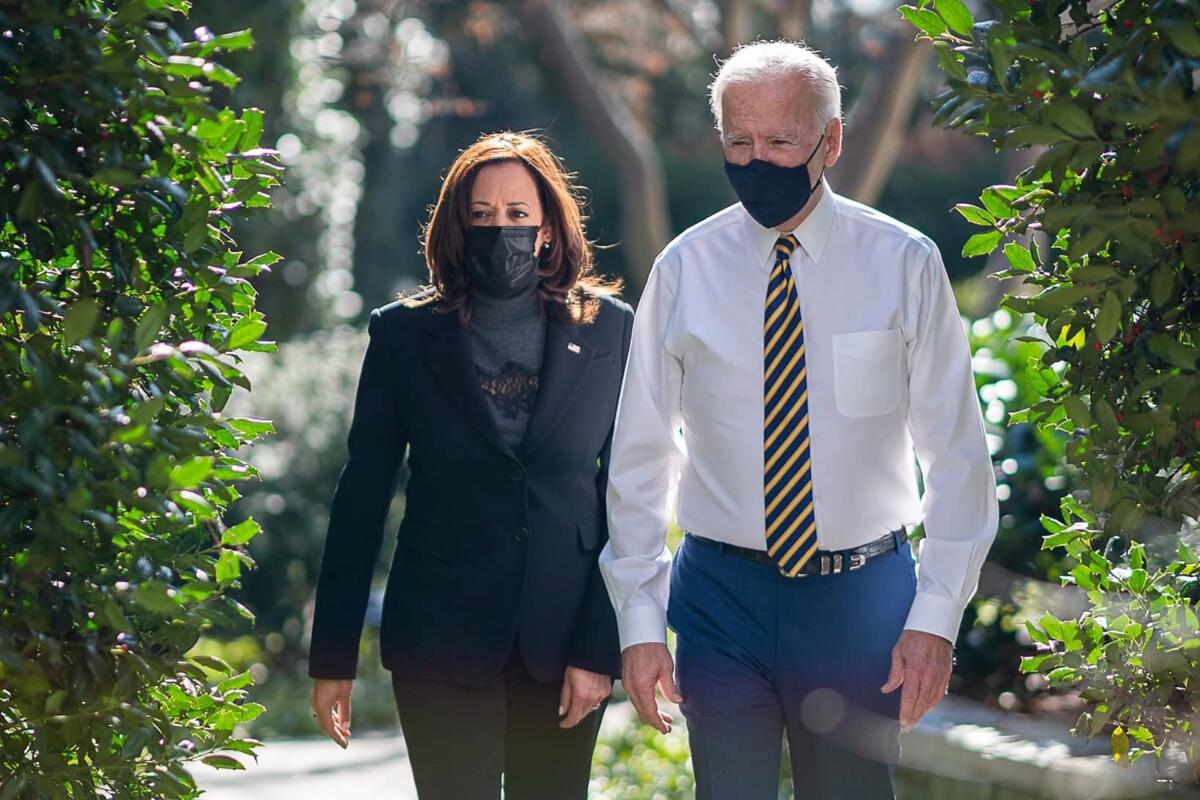
WASHINGTON — Al Gore came armed with policy memos, George H.W. Bush with jokes, and Dan Quayle with requests from Cabinet secretaries. Mike Pence brought plenty of patience.
Though they differed in their tactics, the vice presidents had the same goal — maximizing their office’s most valuable hour, a weekly lunch with the president.
For nearly 40 years, these regular lunches were a bedrock ritual of the vice presidency, a precious and low-key 60 minutes for the commander in chief and his No. 2 to catch up, swap gossip and mull over strategy. The lunches were among Washington’s most tightly guarded meetings, shrouded in mystery that has frustrated chiefs of staff and bedeviled historians. That’s because no one else is usually in the room.
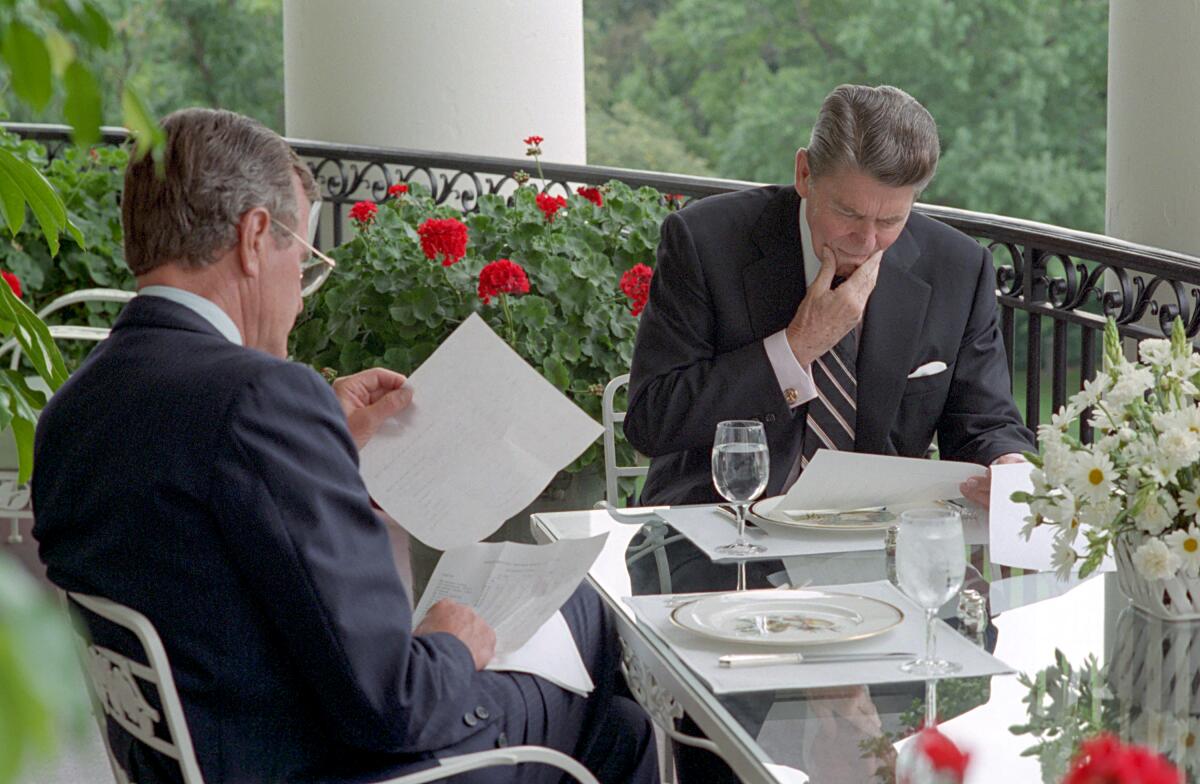
Snippets have emerged about how Vice President Kamala Harris and President Biden do lunch. As they nibble on soup or salad and discuss politics and policy, the nation’s most powerful pair are entertained on a nearby monitor by a running slideshow of their public events, according to advisors.
A recent book, “This Will Not Pass,” portrays the lunches as flat — lacking “a real depth of personal and political intimacy” — and data show the lunches are occurring less frequently. While Biden and Harris dined together about every other week during their first year in office, they have lunched only twice since January, an L.A. Times review of Harris’ schedule shows.
That’s strange considering that as vice president, Biden considered his weekly lunch with President Obama to be inviolable. He pledged to extend the same courtesy to Harris. All of which raises a serious question: Is Harris missing an opportunity to press her issues with the boss and convey to the nation — and political rivals — that she has unparalleled exclusive access to the leader of the free world?
A look at how other vice presidents took advantage of the nation’s most exclusive power lunch suggests the answer is yes.
The lunches are “part of sending a signal on a regular basis that the two are working together and the vice president is important — so the perception as well as the reality of access,” said Joel Goldstein, who has written extensively about vice presidential relationships. “There are other ways of access, but knowing you’re going to have an hour that you can raise things is important.”
The vice presidency was famously described by a former occupant as an office unworthy of a bucket of warm urine. The lunches were conceived to address that problem by giving vice presidents more private access to their boss. They started in 1977 when Walter F. Mondale sought to transform the vice presidency from political hospice into a power center. A month before his swearing-in, he laid out demands in an 11-page memo that called for a weekly meeting, in addition to the right to walk into the Oval Office whenever he wanted. The meeting soon morphed into a weekly lunch that has been adopted by every White House since.
“This was the most valuable time that Mondale had with Carter,” said Goldstein. “These lunches were sacrosanct. It wasn’t something they would just blow off casually on either side.”
The contents of the lunches — at least the parts divined by historians and aides — provide revealing insights into how presidents and their vice presidents meshed.
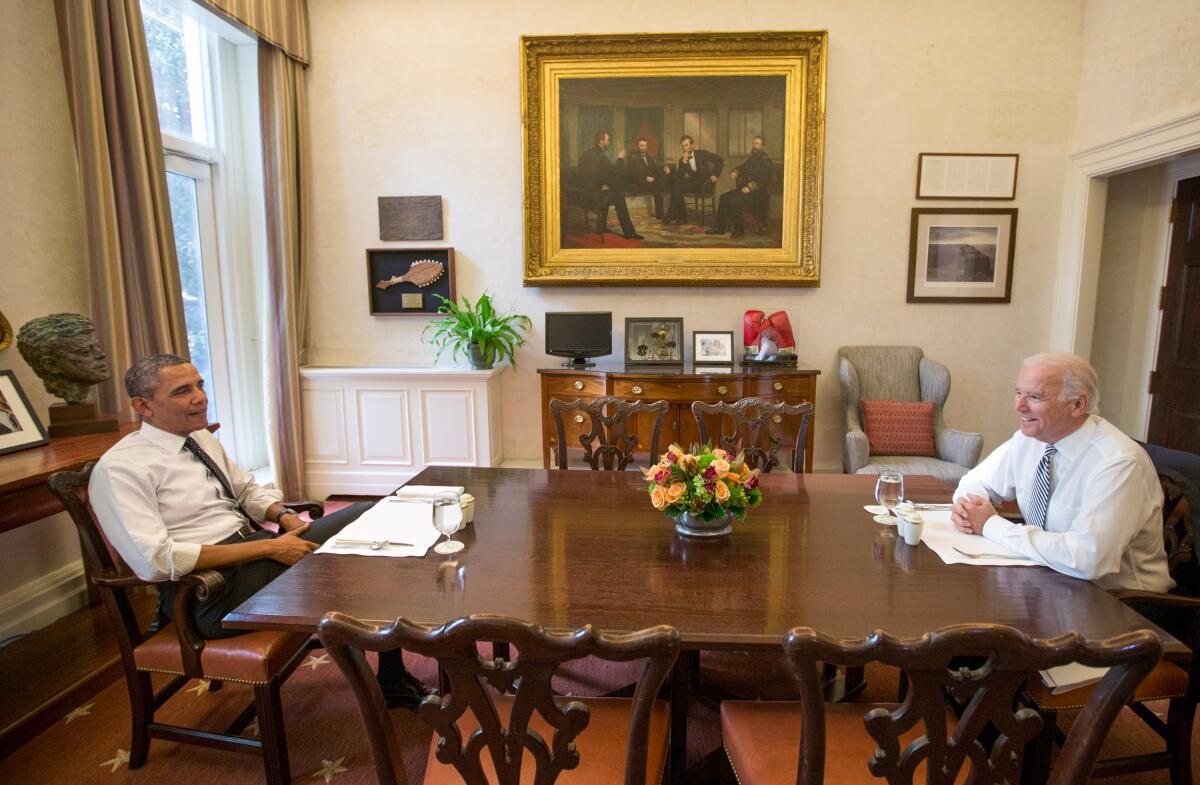
Mondale had more Washington experience than President Carter, a former governor and peanut farmer, making him a valuable counselor on foreign policy and legislative affairs.
George H.W. Bush, once a congressman and head of the CIA, had a similar advantage over President Reagan, an actor and California governor. But he had to approach his boss carefully. The two had been bitter rivals for the 1980 presidential nomination. Over tacos or enchiladas on Thursdays, when the White House chef often prepared its version of Mexican food, Bush sought to build trust. The best way to do that was through humor — Reagan famously started off most meetings with a joke.
Bush, a New England patrician, was hardly a comedian. So, he sought help from friends and associates, including professionals. He frequently called Ray Siller, who wrote for Johnny Carson’s “Tonight Show,” for tips, according to Chase Untermeyer, an aide to the then-vice president. Untermeyer can still recall Bush trying out a joke he got from his brother about a guy named McGee, a bar and a British spy.
“I don’t remember hearing any readout of how the joke went over, but I can easily picture old Ronald Reagan, an appreciator of Irish humor, chuckling,” Untermeyer said. The jokes, Untermeyer said, helped “embellish a friendship that you could say was a surprise to them both.”
When Bush became president in 1989, he kept the lunches, an act Vice President Quayle very much appreciated. The weekly meetings immediately made him more relevant in the administration because officials would see them on the public schedule, Quayle said in a 2002 oral history for the Miller Center. “Invariably, I’d get some calls. ‘Would you mention this?’ And either they had mentioned it and failed, didn’t want to mention it, or didn’t have access to the president,” he said.
Quayle said he was transparent about being a conduit.
“I said, ‘I just want to tell you that Secretary Brady stopped by this morning,’” Quayle recounted, offering an example that involved Treasury Secretary Nicholas F. Brady. “‘He’s really concerned with the turf battle that is going on between State and Treasury on various issues’ — which happened all the time.”
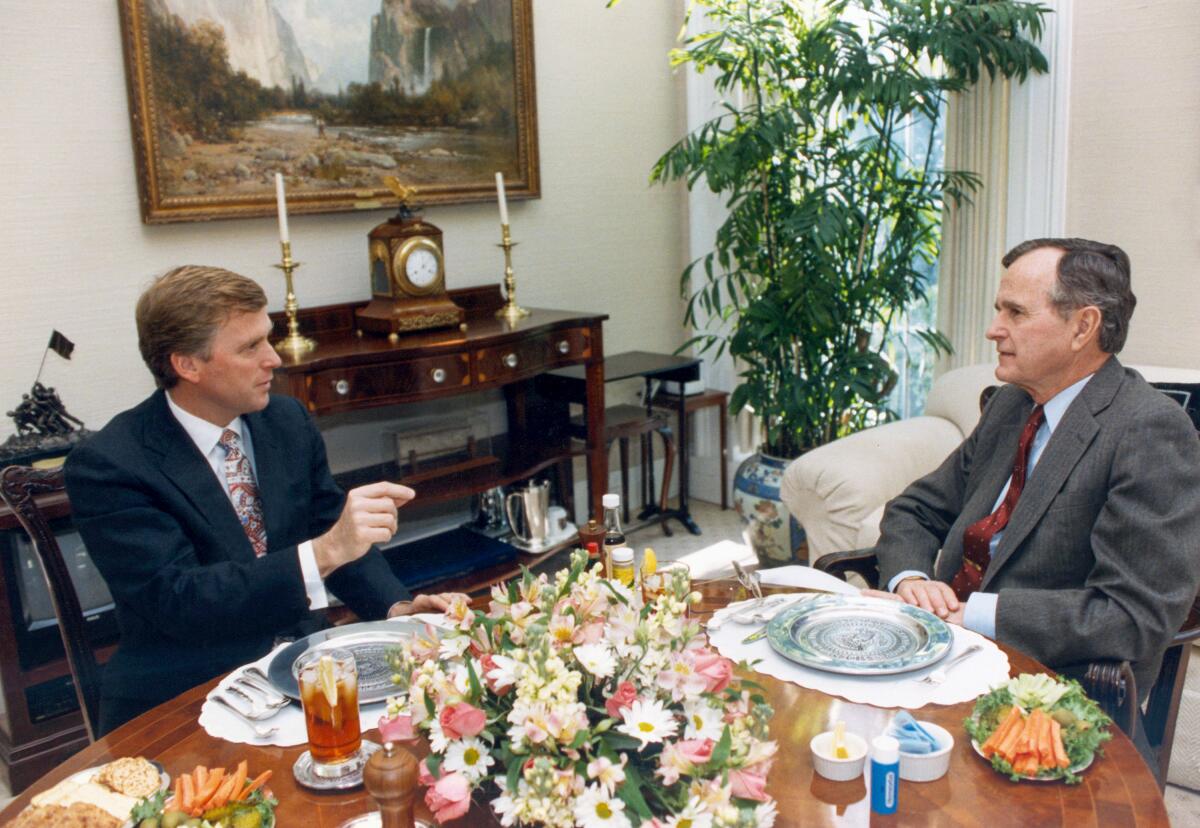
Gore, known for wonky fastidiousness, ordered his staff to craft a weekly memo he could bring with him. The memo — listing bullet points on technology, the environment and other initiatives — was regarded as a priority by the vice president’s aides, a chance to shape which of Gore’s priorities made it in front of the president.
Gore would use the document to get President Clinton’s sign-off, and jot brief notes from the president, said Elaine Kamarck, a former advisor to Gore. Having that approval allowed Gore and his staff to make sure “we didn’t have someone from the West Wing say, ‘You can’t do that,’” she said.
Kamarck said the lunches were a weekly fixture until the relationship frayed over Clinton’s affair with White House intern Monica Lewinsky. (The pair, however, did have lunch the day Clinton’s impeachment trial opened in the Senate.)
Vice President Dick Cheney held such enormous influence over the George W. Bush administration policymaking that he was less dependent on the weekly lunches to exert his power. By one estimate, Cheney attended between 75% and 85% of President George W. Bush’s meetings, according to “Days of Fire,” a history of the younger Bush’s presidency.
The Times is following Vice President Kamala Harris’ official schedule to better understand how she spends her time as the nation’s second in command.
Biden, as vice president, let President Obama choose the menu. Like Mondale, he had more Washington experience than the president, and he used the lunches to influence Obama on the budget, foreign policy and other issues he cared about. The lunches could also stray into deeply personal territory.
After a brief discussion of Iraq policy at a lunch on April 1, 2015, Biden told Obama about his son Beau’s experimental brain cancer surgery at MD Anderson medical center in Houston.
“I was hurting and the president could see it,” Biden wrote in a 2017 memoir, describing a meal that took place about two months before his son’s death. “I looked up and found Barack in tears.”
“He is not a demonstrative man, in public or in private, and I felt bad,” Biden wrote. “I found myself trying to console him.”
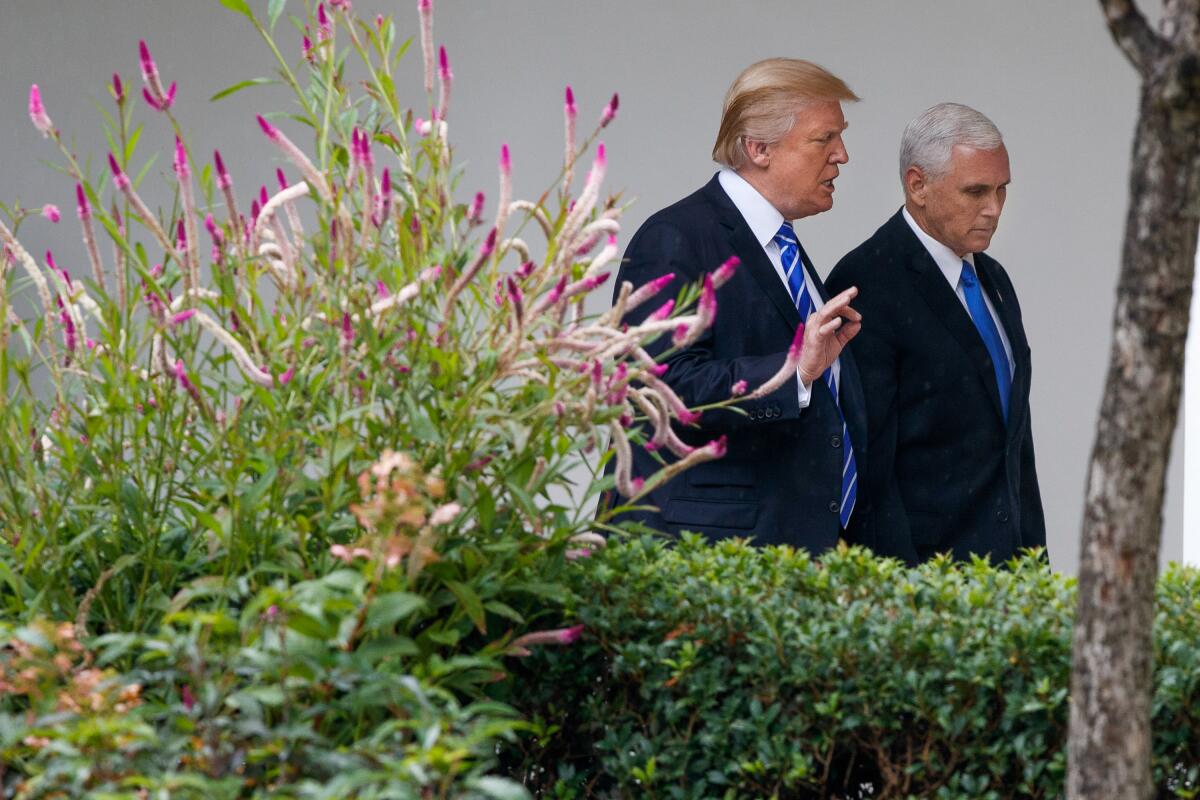
Ted Kaufman, a former interim U.S. senator from Delaware and a Biden friend, said he would not give the lunches “all the credit” for helping turn a professional relationship into a friendship. But, he added, “you’d be hard-pressed to find a president and a vice president that in the end of their term — eight years especially — that they actually liked each other.”
Even President Trump, who smashed most traditions, kept the weekly lunch, though it was a more free-flowing and chaotic affair than in previous administrations. He and Vice President Pence brought along their chiefs of staff. Other officials came and went as they pleased. Though Pence kept a mental list of talking points, he could not count on getting through it because of Trump’s tendency to take conversations off track, according to Marc Short, Pence’s former chief of staff.
Harris almost always meets Biden without staff. A White House official said Biden sees the lunch as “a critical part of the relationship.”
“I made the same deal with her that Barack and I made,” Biden said in an interview with People magazine a week after his inauguration. “I wanted her available to participate in everything that I did. I wanted her to be the last person in the room on every important decision. We have lunch alone once a week — that’s the deal — when we’re both in-country.”
That isn’t quite the deal anymore. Although the weekly meals started as a regular affair, they have waned. An advisor to Harris said the lunches were curtailed for various reasons — outbreaks of COVID-19 inside the White House that affected Harris and her husband, a busier travel schedule and the war in Ukraine. Advisors say the two see each other often in other venues, including when Biden stops by Harris’ office unannounced.
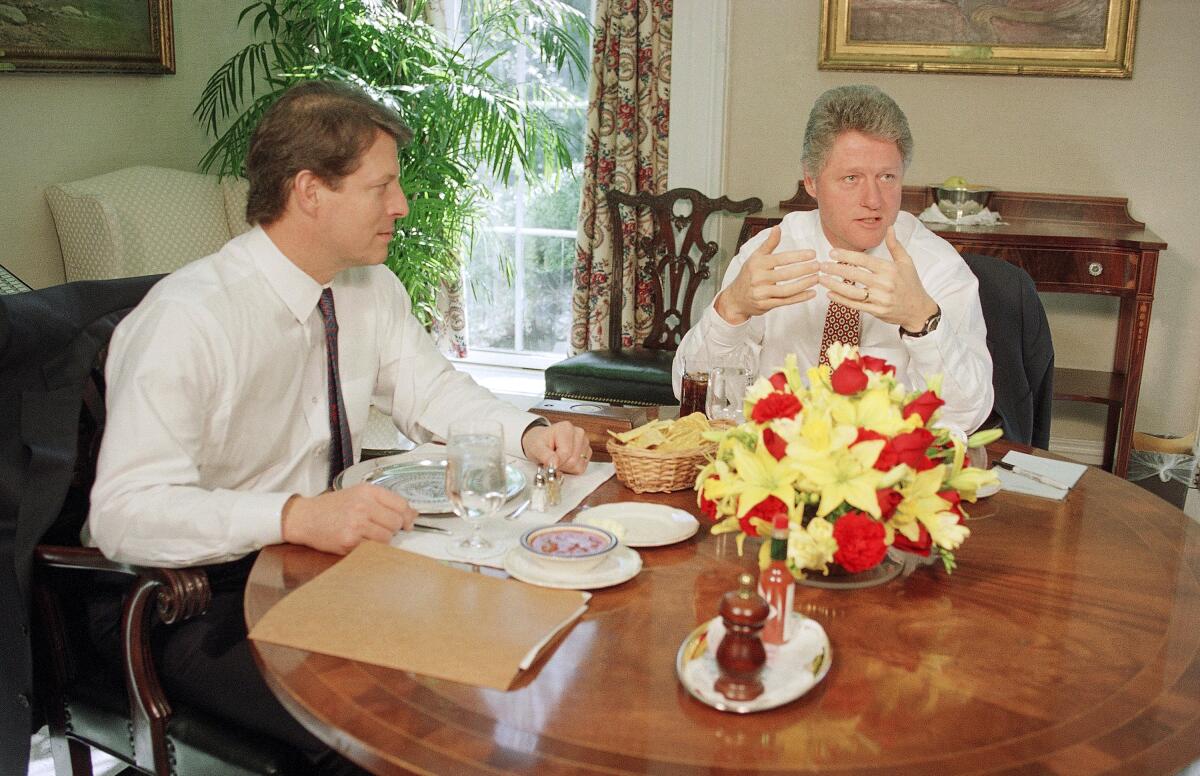
But the decline in lunches, which was first flagged by Real Clear Politics, has fed into larger questions about Harris’ role, and what exactly she brings to the relationship.
Former and current White House advisors acknowledge that Biden’s decades of experience in the Senate and two terms as vice president make it harder for Harris to assert herself in congressional strategy. But they say she brings the perspective of someone who has spent most of her life outside Washington, in California, and has a political profile closer to the Democratic Party’s future.
When they have met for lunch, Harris’ goal has generally been to establish a bond with Biden, aides say. Like Bush and Reagan, Harris and Biden endured a contentious primary campaign and didn’t know each other well before taking office. They eat in the president’s dining room, just off the Oval Office. The menu is usually pretty basic and healthy: soup, salad or sandwich. Unlike Obama, Biden lets Harris choose her meal.
Aides say the talk is often informal, veering from policy to politics to personal matters. From time to time, Biden has been known to call in an advisor such as Mike Donilon to show them the latest polling or Jennifer O’Malley Dillon for an update on the Democratic National Committee.
“It’s not a ‘Here’s my laundry list of things to get you focused on,’” said the White House official. “It’s ‘Let’s have a discussion of things you’re concerned about, things I’m concerned about and things we need to discuss.’”
A few times, they have cut lunch short to take a stroll through the White House courtyard, just the two of them.
Thomas Suh Lauder of The Times’ data and graphics team contributed to this report.
More to Read
Get the L.A. Times Politics newsletter
Deeply reported insights into legislation, politics and policy from Sacramento, Washington and beyond. In your inbox three times per week.
You may occasionally receive promotional content from the Los Angeles Times.

